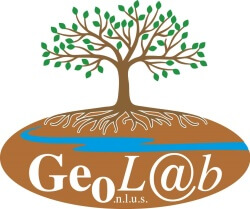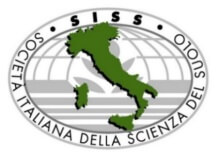Delineation of aquifer vulnerability to pollution: A case study in Eha Alumona, Nsukka Local Government Area, Enugu State, Nigeria
DOI:
https://doi.org/10.6092/issn.2281-4485/21952Keywords:
aquifer vulnerability, GOD index, GLSI index, DRIST index, Susceptibility Index, groundwater protectionAbstract
This study aims to assess the vulnerability of aquifers to contamination in Eha Alumona, Nsukka Local Government Area, Enugu State, Nigeria, using resistivity data and various vulnerability indices. The VES survey conducted across fifty stations revealed five distinct geo-electric layers, with resistivity values ranging from 5.7 to 87,620.9 Ωm, and depths varying from 0.4 to 234.5 m. The study's findings indicate that the first two layers are characterized by low resistivity values, suggesting the presence of surface materials such as sandy soil and weathered rock, which are likely to contain moisture and exhibit varying porosity. The lower layers show higher resistivity values, pointing to more consolidated or less permeable geological materials. The vulnerability assessment, based on four indices (GOD, GLSI, DRIST, and SI), reveals that the aquifer is generally low in vulnerability across the study area. The GOD index suggests low contamination risk due to deep water tables and protective layers. The GLSI and DRIST indices further indicate moderate to low susceptibility, with 62% and 64% of the study area being classified as moderately susceptible, respectively. The SI index also supports these findings, categorizing the aquifer as well-protected from contamination. Overall, the results emphasize the importance of monitoring and sustainable management practices to ensure the long-term protection of groundwater resources in the region.
References
AGAGU O.K., FAYOSE E.A., PATERS S.W. (1985) Stratigraphy and sedimentation in the Senonian Anambra basin of Eastern Nigeria. Journal of Mining and Geology, 2: 25–35.
ALLER L., LEHR J. H., PETTY R., BENNETT T. (1987) DRASTIC: A standardized system to evaluate ground water pollution potential using hydrogeologic settings. In Petroleum hydrocarbons and organic chemicals in ground water: Prevention, detection and restoration (pp. 38–57).
BABIKER I.S., MOHAMED M.A.A., HIYAMA T., KATO K. (2005) A GIS-based DRASTIC model for assessing aquifer vulnerability in Kakamigahara Heights, Gifu Prefecture, central Japan. Science of the Total Environment, 345(1–3):127–140.
BAKTI H., LUBIS R.F., DELINOM R.M., TANIGUCHI M. (2017) Submarine groundwater discharge (SGD) measu-rement on the sandy unconfined aquifer in the Carnaval Beach-Ancol Jakarta Bay. Marine Research in Indonesia, 41(2):59–65. https://doi.org/10.14203/mri.v41i2.110
BANERJEE A., CREEDON L., JONES N., GILL L., GHARBIA S. (2023) Dynamic groundwater contamination vulnerability assessment techniques: A systematic review. Hydrology, 10: 182. https://doi.org/10.3390/hydrology10090182
BARBULESCU A. (2020) Assessing groundwater vulnera-bility: DRASTIC and DRASTIC-like methods: A review. Water, 12:1356. https://doi.org/10.3390/w12051356
BRINDHA K., ELANGO L. (2015). Cross comparison of five popular groundwater pollution vulnerability index approaches. Journal of Hydrology, 524: 597–613.https://doi.org/10.1016/j.jhydrol.2015.03.003
FOSTER S.D. (1987) Fundamental concepts in aquifer vulnerability, pollution risk, and protection strategy. In W. Van Duijvenbooden & H. G. Van Waegeningh (Eds.), Vulnerability of soil and groundwater to pollutants (69–86).
GEORGE N.J., EKANEM A.M., THOMAS J.E., UDO-SEN N.I., OSSAI N.M., ATAT J.G. (2023) Electrosequence valorization of specific enablers of aquifer vulnerability and contamination: A case of index-based model approach for ascertaining the threats to quality groundwater in sedimenta-ry beds. HydroResearch. https://doi.org/10.1016/j.hydres.2023.11.006
GHOUILI N., JARRAYA-HORRICHE F., HAMZAOUI-AZAZA F., ZAGHRARNI M.F., RIBEIRO L. ZAMMO-URI M. (2021). Groundwater vulnerability mapping using the Susceptibility Index (SI) method: Case study of Takelsa aquifer, Northeastern Tunisia, Journal of African Earth Sciences, 178: 104035. https://doi.org/10.1016/j.jafrearsci.2020.104035
HILAL I., OUBEID A.M., QURTOBI M., AQNOUY M., AMENZOU N., SAADI R., RAIBI F., BELLARBI M., SI MHAMDI H., SADIKI M., HASNAOUI M.D., BENMAN-SOUR M. (2024) Groundwater vulnerability mapping using the susceptibility index (SI) method and tritium isotopes: A case study of the Gharb aquifer in northwestern Morocco. E3S Web of Conferences 489: 07001. ttps://doi.org/10.1051/e3sconf/202448907001
IBUOT J.C., OBIORA D.N., EKPA M.M., OKOROH D. O. (2017) Geoelectrohydraulic investigation of the surficial aquifer units and corrosivity in parts of Uyo L. G. A., Akwa Ibom State, Southern Nigeria. Applied Water Science, 7: 4705–4713.
IBUOT J.C., GEORGE N.J., OKWESILI A.N., OBIORA D.N. (2019a) Investigation of litho-textural characteristics of aquifer in Nkanu West Local Government Area of Enugu state, southeastern Nigeria. Journal of African Earth Sciences, 157:197–207.
IBUOT J.C., OKEKE F.N., OBIORA D.N. GEORGE N. J. (2019b) Assessment of impact leachate on hydrogeological repositories in Uyo, Southern Nigeria. Journal of Environmental Engineering and Science, 14(2): 97-107.
IBUOT J.C., OBIORA D.N., EKPA M.M., OMEJE E.T. (2024) Geo-electric techniques for estimating and mapping the electro-geohydraulic properties of the shallow aquifer within the Nsukka Formation in eastern Nigeria. Earth Sciences Research Journal, 28(3):349–359.https://doi.org/10.15446/esrj.v28n3.110328
IFEDIEGWU S.I., CHIBUIKE I.E. (2021) GIS-based evaluation of shallow aquifer vulnerability to pollution using DRASTIC model: A case study on Abakaliki, southeastern Nigeria. Arabian Journal of Geosciences, 14: 2534. https://doi.org/10.1007/s12517-021-08811-8
KAGABU M., DELINOM R.M., LUBIS R.F., SHIMADA J., TANIGUCHI M. (2010) Groundwater characteristics in Jakarta area, Indonesia. Jurnal RISET Geologi dan Pertam-bangan, 20(2): 69. https://doi.org/10.14203/risetgeotam2010.v20.35
KHEMIRI S., KHNISSI A., ALAYA B.A., SAIDI S., ZARGROUNI F. (2013) Using GIS for the comparison of intrinsic parameter methods assessment of groundwater vulnerability to pollution in scenarios of semiarid climate: The case of Foussana groundwater in the central of Tunisia. Journal of Water Resource and Protection, 5(8), 835–845.
KIRLAS M.C., KARPOUZOS D.K., GEORGIOU P.E., KATSIFARAKIS K.L. (2022) A comparative study of groundwater vulnerability methods in a porous aquifer in Greece. Applied Water Science, 12: 123. https://doi.org/10.1007/s13201-022-01651-1
LASHKARIPOUR G.R., NAKHAEI M. (2005) Geoelectri-cal investigation for the assessment of groundwater conditions: A case study. Annales Geophysicae, 48(6):937–944.
LOKE M.H. (2009) Electrical imaging surveys for environ-mental and engineering studies: A guide to 2D and 3D surveys. Workshop held at USM.
MANSOUR K., OMAR K., ALI K., ABDEL ZAHER M. (2018) Geophysical characterization of the role of fault and fracture systems for recharging groundwater aquifers from surface water of Lake Nasser. NRIAG Journal of Astronomy and Geophysics, 7(1):99–106. https://doi.org/10.1016/j.nrjag.2018.02.001
NEJATIJAHROMI Z., NASSERY H.R., HOSONO T., NAKHAEI M., ALIJANI F., OKUMURA A. (2019) Groundwater nitrate contamination in an area using urban wastewaters for agricultural irrigation under arid climate condition, southeast of Tehran, Iran. Agricultural Water Management, 221:397–414.
NUGRAHA G.U., BAKTI H., LUBIS R.F., SUDRAJAT Y., ARISBAYA I. (2021) Aquifer vulnerability in the coastal northern part of Lombok Island, Indonesia. Environment, Development and Sustainability, 24:1390–1410.
OBAJE N.G. (2009) Geology and mineral resources of Nigeria (Vol. 120). Springer.
OBIORA D.N., IBUOT J.C. (2020) Geophysical assessment of aquifer vulnerability and management: A case study of University of Nigeria, Nsukka, Enugu State. Applied Water Science, 10:29. https://doi.org/10.1007/s13201-019-1113-7
OGBUKAGU I.N. (1976) Soil erosion in the northern parts of Awka—Orlu uplands Nigeria. Journal of Mining and Geology, 13(2):6–19.
OMEJE E.T., IBUOT J.C., UGBOR D.O., OBIORA D.N. (2022) Geophysical investigation of transmissibility and hydrogeological properties of aquifer system: A case study of Edem, Eastern Nigeria. Water Supply, 22(5):5044–5055.
OMEJE E.T., OBIORA D.N., OKEKE F.N., IBUOT J.C., OMEJE V.D. (2023a) Application of geoelectric technique and sensitivity analysis in assessment of aquifer vulnerability: A case study of Nsukka and Igbo Etiti area, Eastern Nigeria. Environment, Development and Sustainability. https://doi.org/10.1007/s10668-023-03351-5
OMEJE E.., OBIORA D.N., OKEKE F.N., IBUOT J.C., UGBOR D.O. (2023b) Investigation of aquifer vulnerability and sensitivity analysis of modified DRASTIC and SINTACS models: A case study of Ovogovo Area, Eastern Nigeria. Acta Geophysica.https://doi.org/10.1007/s11600-022-00992-4
ONI T.E., OMOSUYI G.O., AKINLALU A.A. (2017) Groundwater vulnerability assessment using hydrogeologic and geoelectric layer susceptibility indexing at Igbara Oke, Southwestern Nigeria. NRIAG Journal of Astronomy and Geophysics, 6(2): 452–458. https://doi.org/10.1016/j.nrjag.2017.04.009
PATEL P., MEHTA D., SHARMA N. (2022) A review on the application of the DRASTIC method in the assessment of groundwater vulnerability. Water Supply, 22:5–5190. https://doi.org/10.2166/ws.2022.126
PISCOPO G. (2001). Groundwater vulnerability map explanatory notes – Castlereagh Catchment. NSW Department of Land and Water Conservation, Parramatta, NSW, Australia.
PUTRANTO T.T., HIDAJAT W.K., SUSANTO N. (2017) Developing groundwater conservation zone of unconfined aquifer in Semarang, Indonesia. IOP Conference Series: Earth and Environmental Science, 55:01036.
PUTRANTO T.T., SANTI N., DIAN AGUS, WIDIARSO, D. A., DIMAS P. (2018). Application of aquifer vulnerability index (AVI) method to assess groundwater vulnerability to contamination in Semarang urban area. MATEC Web of Conferences, 159, 01036.
RAHMAN A.A. (2008) GIS-based DRASTIC model for assessing groundwater vulnerability in shallow aquifer in Aligarh, India. Applied Geography, 28:32–53. https://doi.org/10.1016/j.apgeog.2007.07.008
REYMENT R.A. (1965). Aspects of the geology of Nigeria. Ibadan University Press.
RUSYDI A.F., NAILY W., LESTIANA H. (2015) Pencemaran limbah domestik dan pertanian terhadap air tanah bebas di kabupaten Bandung. Jurnal RISET Geologi dan Pertambangan, 25(2):87. https://doi.org/10.14203/risetgeotam2015.v25.201
SARAVANAN S.T. (2021) Evolution of a hybrid approach for groundwater vulnerability assessment using hierarchical fuzzy DRASTIC models in the Cuddalore region, India. Environmental Earth Science, 80(5):1–25.
SARAVANAN S., PARTHASARATHY K.S.S., SIVARA-NJANI S. (2018) Assessing coastal aquifer to seawater intrusion: Application of the GALDIT method to the Cuddalore aquifer, India. In Global perspectives, regional processes, local issues. Elsevier. https://doi.org/10.1016/B978-0-12-814350-6.00010-0
STEMPVOORT D.V., EWERT L., WASSENAAR L. (1993) Aquifer vulnerability index: A GIS-compatible method for groundwater vulnerability mapping. Canadian Water Resources Journal, 18(1), 25–37.
STIGTER T.Y., RIBEIRO L., CARVALHO A.M.M., DILL D. (2006) Evaluation of an intrinsic and a specific vulnera-bility assessment method in comparison with groundwater salinization and nitrate contamination levels in two agricultu-ral regions in the south of Portugal. Hydrogeology Journal, 14(1–2):79–99. https://doi.org/10.1007/s10040-004-0396-3
SULTANA Q., SULTANA A. (2024). Groundwater pollu-tion and its assessment: A review. 4th International Symposium of Scientific Research and Innovative Studies (ISSRIS’24).
TEIXEIRA J., CHAMINÉ H.I., ESPINHA MARQUES J., CARVALHO J.M., PEREIRA A.J.S.C., CARVALHO M. R., FONSECA P.E., PÉREZ-ALBERTI A., ROCHA F. (2015) A comprehensive analysis of groundwater resources using GIS and multicriteria tools (Caldas Da Cavaca, Central Portugal): Environmental issues. Environmental Earth Sciences, 73(6):2699–2715. https://doi.org/10.1007/s12665-014-3602-1
TRESOLDI G., AROSIO D., HOJAT A., LONGONI L., PAPINI M., ZANZI L. (2019) Long-term hydrogeophysical monitoring of the internal conditions of river levees. Engineering Geology, 259:105139. https://doi.org/10.1016/j.enggeo.2019.05.016
UGWUANYI M.C., IBUOT J.C., OBIORA D N. (2015) Hydrogeophysical study of aquifer characteristics in some parts of Nsukka and Igbo Eze south local government areas of Enugu State, Nigeria. International Journal of Physical Sciences, 10(15):425–435.
YUSUF M. A., ABIYE T.A. (2019) Risks of groundwater pollution in the coastal areas of Lagos, southwestern Nigeria. Groundwater for Sustainable Development. https://doi.org/10.1016/j.gsd.2019.100222
ZHAI Y., ZHAO X., TENG Y., LI X., ZHANG J., WU J., ZUO R. (2017) Groundwater nitrate pollution and human health risk assessment by using HHRA model in an agricultural area, NE China. Ecotoxicology and Environmental Safety. https://doi.org/10.1016/j.ecoenv.2016.11.010
Downloads
Published
How to Cite
Issue
Section
License
Copyright (c) 2025 Okwudili Cornelius Ossai, Daniel Nnaemeka Obiora, Francisca Nneka Okeke, Johnson Cletus Ibuot

This work is licensed under a Creative Commons Attribution 4.0 International License.









